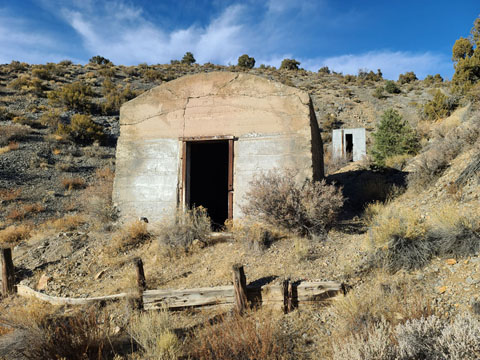Lane City
In November 1867, an Indian showed prospectors silver-bearing rock in the area, and the Robinson Mining District was organized in March of the following year. The first real camp of the district, known as Mineral City, was settled in 1869 and that year a furnace and 10-stamp mill were erected. By 1870, due in part to the completion of the Transcontinental Railroad to the north, 400 people lived in Mineral City, and a post office opened on August 9th. The town had mercantile stores, six saloons, hotels, four boarding houses, restaurants, livery stables, an express office, and a blacksmith shop. By 1872, the population reached 600. A stage station, called Ragsdale Station, was located here as well and a tri-weekly stage ran to Hamilton.
By 1876, the visions of rich mines here had diminished, and the town began to disappear. The post office closed on December 28 of that year, and Mineral City was practically deserted.
In 1896, Charles D. Lane purchased the Chainman Mine & Mill. He built a water ditch, power plant, and 100-ton cyanide mill (costing over $168,000) which began operation in March 1902. The camp was reborn, this time named Lane or Lane City. A post office opened once again, reflecting the name change, on October 21, 1902. It would only last until September 30th of the next year, however.
After less than five years, Lane's cyanide mill proved to be a failure; no large amounts of gold were recovered. Although the post office would reopen from May 12, 1906 until July 31, 1911, nothing substantial ever came of that revival.














































